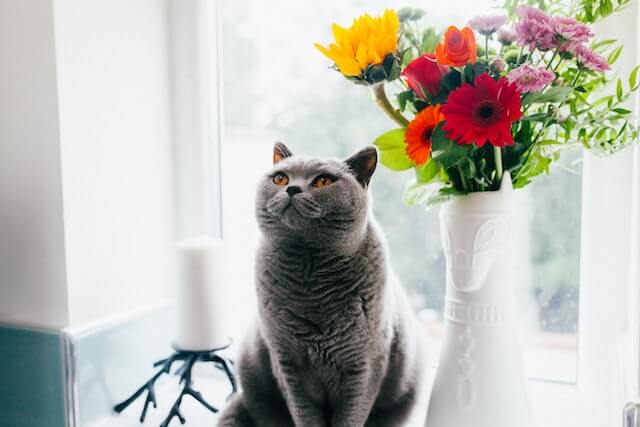
Your home contains numerous pet hazards you’ll want to address immediately. Toxic foods like chocolate, xylitol, grapes, and onions cause serious health complications. Medications, cleaning products, and essential oils pose chemical risks. Houseplants including lilies and sago palms trigger organ damage. Small objects create choking hazards and blockages. Each room requires targeted pet-proofing strategies.
Recognize poisoning symptoms—vomiting, lethargy, abnormal gait—and contact your veterinarian immediately. Understanding your home’s specific dangers considerably improves your pet’s safety outcomes and survival prospects.
Toxic Foods and Substances
Because many common foods and household items are toxic to pets, it’s crucial to understand which substances pose the greatest risks.
Chocolate contains theobromine, which triggers increased heart rate and seizures in your pets.
You’ll find xylitol in sugar-free products—it causes rapid insulin release and liver failure.
Grapes and raisins damage your dog’s kidneys, potentially causing acute kidney failure even in small amounts.
Onions and garlic contain compounds that destroy your pet’s red blood cells, leading to hemolytic anemia.
Avocado pits and skins present choking hazards, while their persin content causes vomiting and diarrhea.
Alcohol, even in minimal quantities, produces ethanol poisoning with symptoms including vomiting, breathing difficulties, and potentially fatal outcomes.
You must store these toxic food items securely away from your pets’ access.
Dangerous Chemicals and Medications
Your home contains numerous chemicals and medications that pose severe toxicity risks to pets, many of which can cause serious harm or death even in minimal quantities.
Common household hazards include acetaminophen, ibuprofen, and antidepressants—medications that’re lethal to animals in small doses. You must secure cleaning products containing bleach and ammonia, as they cause chemical burns and poisoning.
Store mothballs safely; they’re fatal if ingested or inhaled. Dangerous items like nicotine products, including cigarettes and vape pens, create serious health complications.
Liquid potpourri and certain essential oils trigger gastrointestinal distress or respiratory issues in pets.
You’ll protect your animals by storing all medications in cabinets, using pet-safe cleaning alternatives, and consulting your veterinarian before introducing potentially harmful household products into your pet’s environment.
Hazardous Plants and Objects
While securing medications and chemicals protects your pet from internal poisoning, the items displayed throughout your home—particularly plants and small objects—create equally dangerous hazards.
Common plants like lilies trigger kidney failure, while sago palms cause liver damage. Pothos and philodendrons contain calcium oxalate crystals that produce oral irritation and gastrointestinal distress.
You must also eliminate small object hazards for pets. Batteries, coins, and jewelry pose choking risks and cause internal blockages requiring surgical intervention.
Additionally, concentrated essential oils—particularly tea tree and eucalyptus—trigger skin irritation and respiratory distress. Mothballs present severe toxicity threats; inhalation or ingestion causes vomiting and seizures.
You’ll greatly reduce pet injury risk by removing these hazards. Store plants safely, secure small objects, and eliminate toxic substances to create a genuinely pet-safe environment throughout your home.
Room-by-Room Pet-Proofing Strategies
Once you’ve removed obvious hazards like toxic plants and small objects, you’ll need to systematically address pet safety in each room of your home.
In the kitchen, pet owners should keep toxic foods like chocolate and xylitol in locked cabinets and use heavy, pet-proof trash cans to prevent access to harmful scraps.
In living areas, secure electrical cords with protectors and eliminate choking hazards.
Bathrooms require childproof medication storage and closed toilet lids to prevent ingestion or drowning risks.
You’ll want to inspect outdoor spaces regularly for dangerous plants and apply only pet-safe yard chemicals.
This methodical approach across all home zones creates extensive protection, greatly reducing accidental poisoning, choking, and injury incidents that commonly affect pets in domestic environments.
Recognizing Signs of Poisoning and When to Act
Despite your best pet-proofing efforts, accidental ingestion of toxic substances can still occur, making it essential that you’re able to recognize poisoning symptoms quickly.
Watch for vomiting, diarrhea, wobbly gait, and abnormal eating habits—these clinical indicators signal potential toxicity. Behavioral changes like decreased responsiveness or lethargy warrant immediate veterinary evaluation.
Time proves critical in poisoning cases. You must contact a veterinarian or pet poison control center immediately upon suspected ingestion. Swift action considerably improves treatment outcomes and prevents severe health deterioration.
Maintain updated contact information for emergency veterinary services readily accessible in your home. Store poison control numbers on your phone and refrigerator.
Delays in seeking treatment greatly increase complications and mortality risk. Early symptom recognition combined with prompt professional intervention greatly enhances your pet’s survival and recovery prospects.
Conclusion
You’ve navigated the minefield of household hazards that threaten your pet’s survival. By implementing systematic pet-proofing protocols—securing toxins, isolating medications, and eliminating choking hazards—you’ll construct an impenetrable fortress around your companion. Vigilance becomes your shield; knowledge becomes your sword. You’re not merely removing dangers; you’re recalibrating your home’s risk profile.
When you recognize poisoning symptoms promptly and act decisively, you’re fundamentally granting your pet an extended lease on life, transforming your dwelling into a sanctuary rather than a den of preventable threats.

